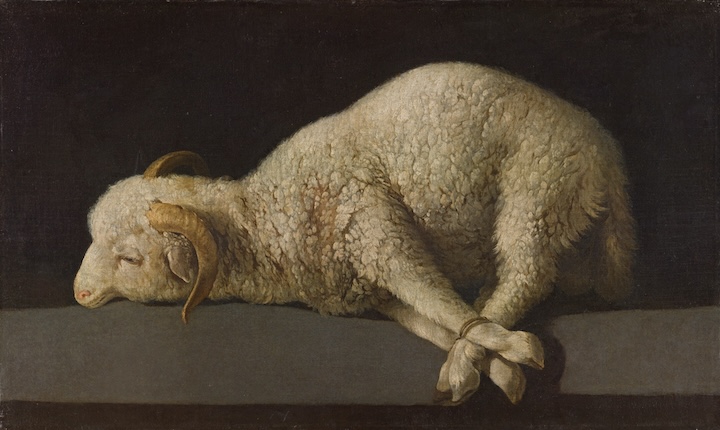The United States Conference of Catholic Bishops are meeting in Baltimore this week for their fall plenary. While the agenda for the conference is set long in advance, events in the Church and the world have a way of shaping the tenor of the meeting. This year, several such things are worth our attention.
The first such event was Pope Francis’ removal of Bishop Joseph Strickland from his diocese in Tyler, Texas less than a week ago. As is often the case, the Vatican gave no official reason for the removal, which has led (predictably) to a lot of back and forth about whether the removal was punitive or if there were sufficient administrative reasons to justify it.
There are more than a few American bishops who share at least some of Strickand’s concerns about, for example, the Synod on Synodality. But while some share those ecclesial concerns, few shared his affinity for what might be described as a “fire, ready, aim” strategy in voicing those concerns, particularly on social media. Put another way, Strickland didn’t just stick his neck out repeatedly, he was practically daring the Vatican to take action.
Very few other bishops – even those who agree with Strickland on any number of substantive issues – have put themselves in a similar position. Call this fear or call it prudence, the notion that Strickland’s removal somehow put other American bishops “on notice” seems a stretch. If Strickland’s removal is a cause for consternation (and any perceived offense for the divine right of the episcopate, as Cardinal Mueller recently said, is just that), it is also likely to be something of a relief to the many bishops who saw Strickland as, if not quite a pariah, then at least imprudent and, often, a distraction.
And that brings us to the second bit of context for the meeting in Baltimore: Rome’s peculiar view of the Church in the United States. Pope Francis is known to make occasional criticisms of the American Church as being full of reactionary backwardists. These jabs have not so much pricked the consciences of American bishops as they seem to have prompted confusion about just what the Holy Father is talking about.
With these criticisms in mind, it came as an unpleasant surprise to many bishops when the nuncio to the United States, Cardinal Christophe Pierre, gave an interview to America Magazine (which ran early this month) in which he echoed a similarly unflattering picture of the Church in the United States.
Among Cardinal Pierre’s criticisms was that the American bishops continue to fail to understand the need for the kind of consultation and collaboration with laity that synodality is meant to promote and embody. The result, he suggests, is flagging efforts at evangelization and mission.
In his opening remarks in Baltimore on Tuesday, USCCB President, Archbishop Timothy Broglio (who attended the Synod on Synodality) went out of his way to insist that a “synodal” dynamic, far from being absent, is already an important part of the Church in the United States, even if it doesn’t go by the name “synodal.”
The collegial atmosphere that characterizes these assemblies, the excellent consideration and interaction that typifies the work of the National Advisory Council, the work of diocesan pastoral councils, presbyteral councils, review boards, school boards, and so many other organizations come readily to mind.

Archbishop Broglio continued: “That is not to say that we do not have to grow and open ourselves to new possibilities, but we recognize and build on what is already present. We open our hearts to the action of the Holy Spirit and we listen to that voice.”
Broglio’s gentle, but unmistakable, counterpoint to the nuncio’s criticisms was not lost on the assembled bishops. The conference president was speaking for, not just to, many of the bishops listening in the hall.
That brings us to a third theme of the meetings: Synodality.
Bishop Daniel Flores, bishop of Brownsville, Texas, serves as chairman of the USCCB doctrine committee. He also serves as a member of the preparatory commission for the ongoing Synod on Synodality. He offered brief remarks to the bishops on Tuesday afternoon as part of a report on the October synod.
Bishop Flores’ short reflection constitutes one of the best articulations of synodality one will find anywhere. If more churchmen spoke about synodality the way Bishop Flores does, it would gain far more interest and arouse far less suspicion and skepticism.
“At its most basic,” Bishop Flores said, “the term ‘synodality’ represents a properly ecclesial style that prioritizes regular conversational interactions among the people of God as decisions are made for the sake of mission that the Lord confided to the Church.”
“Conversation, as the Latin root suggests, implies more than talking and listening. It involves sharing a way and a style of life, a style of communal life described succinctly by St. Paul in Galatians 5:22, marked by love, joy, peace, patience, kindness, generosity, faithfulness, gentleness, self-control.”
The example for this, Flores says, following St. Thomas Aquinas, is Christ himself. This Conversatio Christi finds expression in concrete communities, “gathered around the local Bishop, celebrating the Eucharist, living and often dying in witness to the Faith in Christ we profess together. St. Ignatius of Antioch witnesses to this, and Lumen Gentium explicates it.”
“Communio lived in conversatio,” he continues, “is already an expression of the Mission of the Church since we are called to be an anticipatory sign of the tribes, nations and tongues gathered around the heavenly throne of the Lamb who was slain.”
If there is a version of synodality that the American bishops might enthusiastically embrace, this is it: theologically precise, recognizably Catholic in ecclesiology, rooted in Scripture and Tradition, and expressed in missionary zeal marked by truth and love.
Whether such a vision of synodality will prevail in time remains to be seen.
__________

















